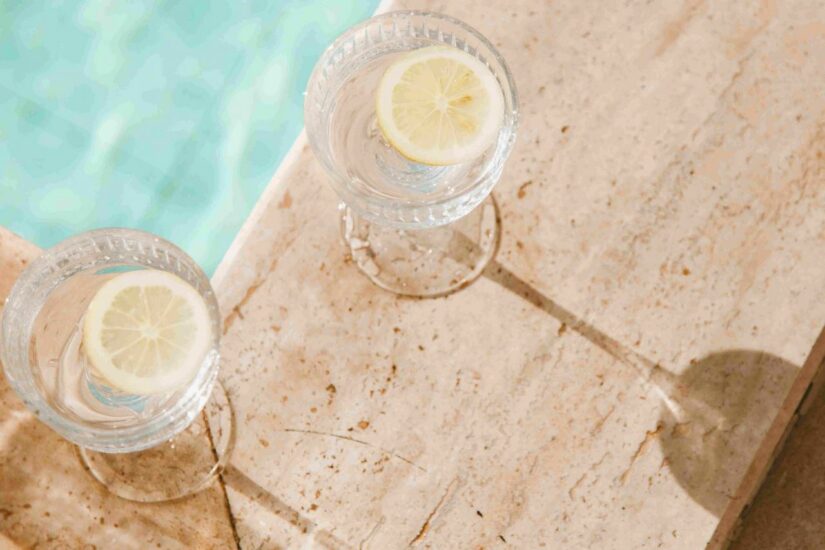Alcohol: No, thanks! No Low drinks are conquering the market and challenging alcoholic beverage choices. Even the drinks industry is carefully following latest developments. Alcohol-free alternatives are definitely here, but are they here to stay?
- Forecast: According to surveys, 80% of people would rather have No Low alternatives
- Industry experts expect further growth
- Producers of alcohol-free alternatives face several challenges
Those looking for enjoyment in a bottle, but consciously avoiding alcohol, can find solutions to fit their lifestyle in No Low drinks – beverages with either “no” or “low” alcohol. Meanwhile, there’s much more to choose from beyond alcohol-free beer or champagne. The new generation of No Low beverages not only includes alcohol-free wine, but an ever-growing number of spirit alternatives with no and low alcohol.
The Bacardi Cocktail Trends Report 2022 confirms that non-alcoholic aperitifs have become a focal point for the beverage industry as part of a more mindful lifestyle. The spirits producer joined the race within the industry by launching a successful campaign in 2021. But how will non-alcoholic beverage trends look in the future – and how should we actually define No Low today?
No Low drinks: What are they?
In everyday terms, No Low beverages have long been known as “non-alcoholic spirits.” In fact, the term is strongly defined, according to EU regulation of spirits: for example, consumer protection dictates that designations like “gin” or “whiskey” may not be used for alcohol-free beverages. The wording “No Low drinks” is synonymous with non-alcoholic aperitifs, often called “alcohol-free alternatives” on drink menus. By definition, No Low drinks refer to all alternatives to alcoholic beverages with “no” and “low” alcohol. These include alcohol-free beverages with up to 0.5 vol. % alcohol, as well as alcohol-free beverages with guaranteed 0.0 vol. %.
The upward trend of alcohol-free alternatives
At the beginning of 2020, the corona pandemic held the entire world in its grip. Many people focused on mental and physical health as a way to combat the virus. A healthy lifestyle became indispensable – in keeping with the longer-term global trend toward prioritizing health. Even before the pandemic era, consumers were increasingly developing a new awareness for physical wellness, sustainability, high-quality organic products, and mindful drinking. According to market analysis from IWSR, sales of alcohol-free aperitifs had already reached about €80 million in 2020. The market potential of No Lo beverages was also clear to two Berlin entrepreneurs. During the corona lockdowns, the savvy duo opened the first alcohol-free kiosk in Germany, with the sociable flair of Berlin‘s late-night convenience shop – the so-called “Späti”.
Short-lived lifestyle product or mindful drink culture of the future
What’s the outlook for the apéro without alcohol?
The variety of non-alcoholic spirits and wine with modern labels and authentic taste is expanding, and not only at Berlin kiosks. The beverage industry is constantly enriched by new, creative alternatives beyond simply alcohol-free beer, sparkling wine – and mocktails.
Eagar conscious consumers are looking for less sugar and a taste experience that comes close to the alcoholic original. These criteria are top of the agenda for the new generation of No Low beverage drinkers. The significance of this more recent development is also reflected in current surveys too. For example, in January 2022, MARTINI® found that almost 35% of Germans approve of the development of alcohol-free alternatives, while 80% of those surveyed for the Bacardi Cocktail Trends Reports 2022 wanted to integrate more No Low alternatives into their day-to-day lives. This reveals an emerging trend toward alcohol-free spirits, further supported by the IWSR forecast: By the year 2024, sales of No Low beverages should reach approximately $500 million in Western Europe.
Challenges No Low producers face
Demand for No Low drinks is growing, but this simultaneously presents new challenges for manufacturers of those beverages.
- Taste
Alcohol, as flavor enhancer, must be replaced in order to retain the trademark taste experience of wine, whiskey, vodka, and the like. - Production
Production processes are complicated and tedious, due to the formulation of new flavors. - Shelf life
Alcohol is a preservative, which is completely missing from alcohol-free aperitifs. This means the shelf-life of the product takes a real hit.
